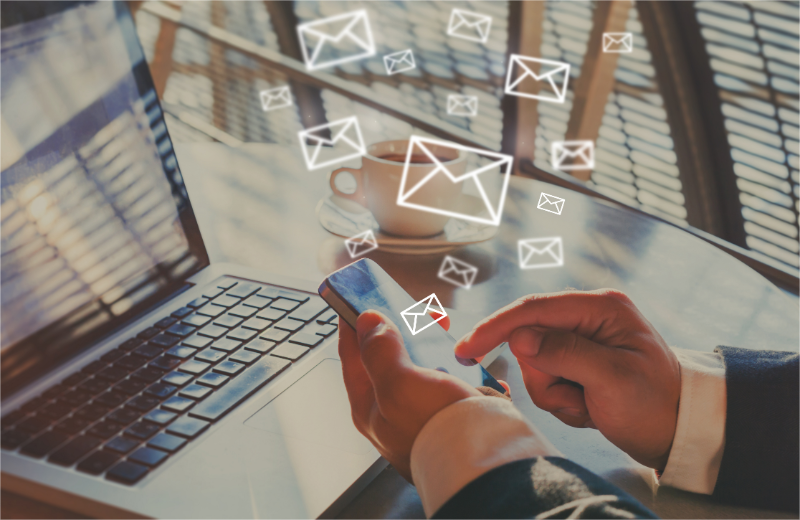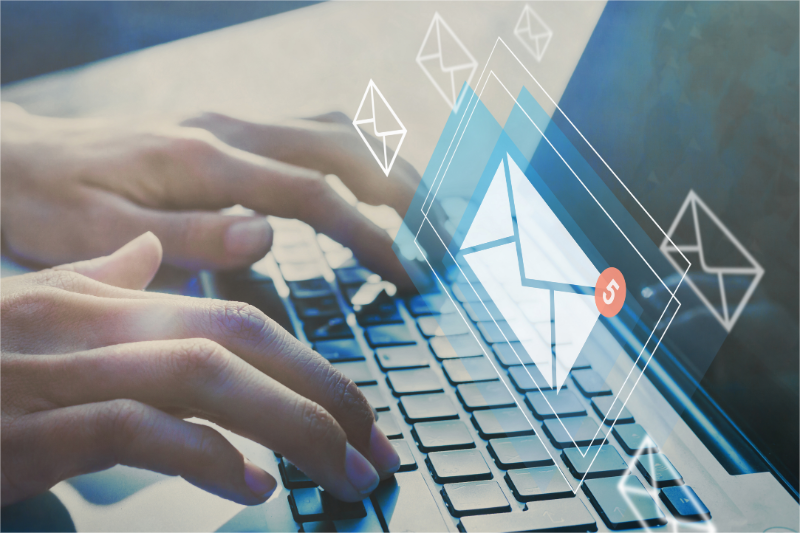If you've ever doubted the impact that a well-crafted fundraising email template can have, let's clear the air: the email campaign is not just a method of communication in the digital era—it is a powerhouse tool for mobilizing your donor base and raising money. Various studies show that email has one of the highest returns on investment (ROI) among fundraising channels, sometimes garnering an ROI as high as 38:1. That means for every dollar spent on email marketing, the average nonprofit organization could see a return of $38. Astonishing, isn't it?
But to reach such heights in raising funds and ensuring your fundraising campaign's success, emails must be crafted carefully. personal story generosity request can make all the difference. A hastily written email can turn a potential donor into an 'unsubscribe' clicker as quickly as they find your fundraising page link or hear about your peer-to-peer fundraiser. So, let's dive in and send a perfect fundraising email to your email list.

Essential Elements of a Fundraising Email Template
To kick things off, let's delve into the anatomy of a winning fundraising email. Regardless of your organization's size, mission, or target audience, there are key elements that every fundraising email must contain to be effective.
1. Subject Line
-
Importance: The subject line is your first and sometimes only chance to capture your reader's attention among a sea of competing emails.
-
Best Practices: Keep it short, relevant, and compelling. A/B testing can also help you identify what resonates most with your audience.
2. Opening Hook
-
Importance: Once your email is opened, the first few lines serve to engage the reader and set the tone for what's to come.
-
Best Practices: Use a startling statistic, emotional story, or a direct question to immediately grab attention. Make sure it's closely related to your fundraising goal.
3. Personalization
-
Importance: A personalized email feels more like personal connections and one-to-one conversations than a mass message, increasing engagement and ultimately, donations.
-
Best Practices: Use personalization tokens to address the donor by name. Go a step further by referencing past donations or interactions with your organization.
4. The Ask
-
Importance: This is the point in your email where you make the explicit donation request.
-
Best Practices: Make your fundraising goal clear, specific, and easy to find. If possible, anchor it to a tangible benefit or impact ("Your $20 can provide a week of meals for a family in need").
5. Call-to-Action (CTA)
-
Importance: A strong CTA guides your reader on what to do next, turning their engagement into actionable results.
-
Best Practices: Use action-oriented language ("Donate Now," "Join Us"). Make the CTA button or link visually prominent and ensure it directly leads to the donation page.
By mastering these essential elements, you'll be well on your way to creating fundraising emails that not only captivate your audience but also drive meaningful action. As we move on to our tried-and-tested templates, you'll see these elements come to life in various contexts, providing you with a holistic toolkit to boost your donations instantly.

5 Game-Changing Fundraising Email Templates
Before we jump into the specifics, let's establish why these 5 templates are indeed "game-changing." Each template targets a distinct scenario or opportunity within your fundraising cycle. Not only are they designed to serve a specific purpose, but they're also meticulously crafted to incorporate the essential elements of a fundraising email we discussed before.
Template 1: The Welcome Email
Importance and Timing
The Welcome Email is not just a courteous introduction; it's your first impression, a moment that can significantly impact the long-term engagement of your new subscribers or potential donors. Send this email immediately after a user subscribes to your newsletter or makes their first donation. The timing is critical—the faster you engage with your new audience, the higher the likelihood that they will take further actions, like donating, sharing your cause, or participating in events.
How it Incorporates Essential Fundraising Email Elements
-
Subject Line: "Welcome to [Your Organization] - You're Making a Difference!" This subject line is engaging, makes the subscriber feel included, and hints at the value and community members they’ve now become a part of.
-
Opening Hook: The email starts with an emotionally charged statement or statistic that aligns with your cause, instantly drawing the reader in. For example, "Did you know your support can provide clean water to a family for a month?"
-
Personalization: Use the subscriber's name to make the message more personal. "Dear [Name], welcome to our community of changemakers."
-
The Ask: In the context of a welcome email, the donation request should be soft. Encourage them to learn more about your cause, share your mission, or participate in upcoming events. This approach sets the stage for future, more direct donation requests.
-
Call-to-Action (CTA): Create a strong call-to-action like "Learn More" or "Get Involved" button that takes the reader to a page where they can further engage with your cause.
Example Fundraising Email Template 1:
Subject Line: Welcome to [Your Organization] - Your Impact Starts Here
Dear [Name],
We're thrilled to have you join our local community. By subscribing to our newsletter, you've taken the first step to making a meaningful impact on [cause you're supporting].
We'll keep you updated on our projects, success stories, and ways you can get involved. To start, why not check out [insert a key resource or upcoming event]?
[Insert Link to Resource or Event]
We look forward to making a difference together.
Warm regards,
[Your Organization]
Template 2: The Event Invitation
Goals and Ideal Timing
The primary goal of the Event Invitation email is to entice your subscribers to attend an upcoming fundraising event that is closely tied to your fundraising objectives. This could be anything from a charity gala to an online webinar. The secondary goal is to build anticipation and interest, even among those who can't attend, as they might still contribute in other ways—like making a donation or spreading the word.
Timing is of the essence when it comes to event invitations. As a rule of thumb, it's good to send out the initial invitation about 4-6 weeks in advance. This offers your audience enough time to clear their schedules. Follow this up with reminder emails as the event date approaches.
How it Incorporates Essential Fundraising Email Elements
-
Subject Line: "You're Invited: Make a Difference at Our [Event Name]." This subject line is direct, inclusive, and clearly states the purpose of the email. It also raises curiosity by alluding to the impact one can make by attending the event.
-
Opening Hook: Start with something gripping that also connects to the theme of your event. For example, "Imagine a night where each laughter echoes into a better future for hundreds in need."
-
Personalization: Use the reader's name and possibly reference any past events they’ve attended or how their past donations have made events like these possible. "Dear [Name], your generous support has been instrumental in events like these that bring our community members together for a cause."
-
The Ask: The main ask here is for them to attend the event. Make it compelling by detailing what they stand to gain (networking, learning, etc.) and what their attendance means for your cause. "By joining us, you're directly contributing to our scholarship fund."
-
Call-to-Action (CTA): Your CTA should be singular and focused—"RSVP Now" or "Book Your Seat" are good options. Make sure the CTA button is easy to find and click through to the event registration page.
Example Fundraising Email 2:
Subject Line: RSVP Today: [Event Name] for [Your Cause]
Dear [Name],
We're hosting [Event Name] on [Event Date], and we'd love for you to be a part of it. This event aims to [explain the event's purpose and how it supports the cause].
To reserve your seat, click the link below:
[Insert Link to Event]
We hope to see you there!
Best,
[Your Organization]
Template 3: The Milestone Update
Differentiation and Timing
The Milestone Update email serves a unique purpose in your fundraising email strategy. It's not asking for donations or inviting people to an event. Instead, it's a celebration of a significant achievement or milestone that your organization has reached, and by extension, that your supporters have helped you achieve. This fosters a sense of shared accomplishment and keeps your audience engaged in the long-term mission.
Timing for a Milestone Update email is tied directly to when these significant milestones occur. Whether it's reaching a fundraising goal, completing a project, or marking an organizational anniversary, send this email promptly while the accomplishment is still fresh.
Integration of Essential Email Elements for Fundraising
-
Subject Line: "We Did It! Major Milestone Reached Thanks to You." This subject line is celebratory, and inclusive, and instantly signals the email's positive content.
-
Opening Hook: Start with a striking image or statistic that directly corresponds to the milestone. For instance, "Thanks to you, 1,000 families now have clean drinking water!"
-
Personalization: Address the donor by their name and relate their individual contribution to the collective achievement. "Dear [Name], your support played a crucial role in reaching this milestone."
-
The Ask: While the focus isn't on soliciting donations, you can softly suggest the journey ahead. "We're thrilled about what we've accomplished but there's still more to do. Stay tuned for exciting updates and opportunities to get involved."
-
Call-to-Action (CTA): Encourage sharing the good news or learning more about the milestone. Buttons like "Share the News" or "Read the Full Story" can be very effective here, leading to a blog post or press release about the milestone.
Example Template 3:
Subject Line: Breaking News: We've Hit a Milestone
Dear [Name],
We're excited to share that we’ve reached [describe the milestone]. This was made possible thanks to supporters like you.
Read the full story here:
[Insert Link to Blog Post or Update]
Let’s keep the momentum going!
Warm regards,
[Your Organization]
Template 4: The Urgent Appeal
The Necessity and Optimal Times for Sending
The Urgent Appeal email is your go-to template when there's an immediate need for action and support. This could be in response to a natural disaster, an impending funding deadline, or a crucial advocacy moment. The sense of urgency should be genuine to maintain the integrity of your organization and the trust of your supporters.
The optimal time for sending an Urgent Appeal is as soon as the need arises. Because of the time-sensitive nature of these appeals, it's essential to communicate immediately to mobilize your donor base.
How to Make it Compelling
-
Subject Line: "Immediate Action Required: Help Us Reach Our Goal by Midnight." This subject line is urgent, and direct, and makes it clear that timely action is needed.
-
Opening Hook: Use a gripping statistic or statement that highlights the urgency. For example, "In the next 24 hours, we have a chance to change lives forever—but we can't do it without you."
-
Personalization: Address the donor by name and make a personalized plea. "Dear [Name], your previous contributions have made a huge impact, and we need your support again right now."
-
The Ask: Be specific and straightforward about what you need. "We're just $5,000 away from our goal. Can you chip in $25 right now?"
-
Call-to-Action (CTA): Use urgent language to compel immediate action. Buttons like "Donate Now" or "Act Immediately" should be highly visible and link directly to the donation page.
Fundraising Email Example 4:
Subject Line: Urgent: We Need Your Help to Reach Our Goal
Dear [Name],
We’re so close to reaching our goal of [insert goal], but we need your help to cross the finish line. Your immediate support can make all the difference.
To donate now, click the link below:
[Insert Donation Link]
Time is of the essence.
Sincerely,
[Your Organization]
Template 5: The Thank-You Email
The Importance of Acknowledgment
Never underestimate the power of a simple "thank you." The Thank-You Email is an integral part of your fundraising strategy, serving as an immediate acknowledgment of your donor's contribution. Not only does this build trust and a sense of reliability around your organization, but it also provides a touchpoint that can foster long-term donor relationships. Remember, a grateful donor is more likely to become a repeat donor.
How to Implement Essential Elements for Maximum Impact
-
Subject Line: "Thank You for Your Generosity, [Name]." A personalized subject line like this one offers immediate acknowledgment and increases the likelihood the email will be opened.
-
Opening Hook: Begin with a heartfelt and direct expression of gratitude. "Your generous contribution is already making a difference—here’s how."
-
Personalization: Beyond using the donor's name, provide details about their specific contribution. "Your gift of $50 last week has helped provide educational materials for 20 students."
-
The Ask: While the primary purpose is to thank the donor, you can include a soft ask for further engagement, such as sharing your cause or upcoming events. "If our mission resonates with you, consider sharing our cause with your friends."
-
Call-to-Action (CTA): Instead of asking for donations, make the CTA focused on further engagement. Options include "Share Our Mission," "Read Impact Stories," or even a referral button saying "Invite Friends."
Example Email for Fundraising Sample:
Subject Line: Thank You, [Name], for Making a Difference!
Dear [Name],
We're writing to express our heartfelt thanks for your recent donation. Your generous contribution of [insert amount] will go a long way in [describe how the donation will be used].
Stay tuned for updates on the impact your gift is making.
With gratitude,
[Your Organization]
Each of these templates can be adjusted further to align with your organization's tone, branding, and specific needs. The key is to maintain the essential elements discussed earlier while adding your unique touch. This will make your emails not just effective but also memorable.

A/B Testing to Fine-Tune Performance
Once you've customized your fundraising email templates and are ready to send them out, you might think your work is done. Not so fast! One of the most powerful tools at your disposal for optimizing your email performance is A/B testing. Here's why it's crucial and what elements you should focus on for testing.
Importance of A/B Testing
A/B testing allows you to send two slightly different versions of the same email to segments of your audience to see which one performs better. By doing this, you can continuously fine-tune your emails for better results. Even small changes can lead to significant improvements in engagement and donations. It's like having a focus group at your fingertips, providing valuable insights that can be immediately applied to future campaigns.
Fundraising Email Best Practices
While you could theoretically A/B test every part of your email, it's more practical to focus on the most crucial elements first.
Subject Line
-
Why Test: Your subject line is the first thing recipients see, and it dramatically impacts open rates.
-
What to Test: Different phrasings, lengths, or tones. For example, test a question-based subject line against a statement.
Opening Hook
-
Why Test: The first few lines of your email determine whether readers will continue engaging.
-
What to Test: Test different types of hooks: a shocking statistic, an emotional story, or a direct question.
Personalization
-
Why Test: Personalization can increase engagement, but it's important to get it right.
-
What to Test: Try different levels of personalization, like just using the first name vs. referencing a past donation.
The Ask
-
Why Test: The way you phrase your ask can directly impact donation amounts and frequency.
-
What to Test: Test different formats like a single lump sum vs. monthly donations, or different anchoring points ("Your $20 can help..." vs. "Your $50 can change...").
Call-to-Action (CTA)
-
Why Test: The CTA is the last push for engagement and needs to be compelling.
-
What to Test: Different action phrases, button colors, or even the position of the CTA in the email.
Crafting effective fundraising emails is more than just a good practice; it's a necessity. By understanding and implementing the essential elements of fundraising emails, you can engage your audience better and raise money. Don't forget the power of A/B testing to fine-tune your strategy and maximize results.
To complement your email efforts, consider using an online fundraising platform like *spotfund. It's free, socially integrated, and allows for quick fund withdrawal. Plus, it's trusted by reputable nonprofit organizations, offering you an added layer of credibility and reach.
Create an online fundraising campaign with *spotfund to boost your fundraising efforts!

